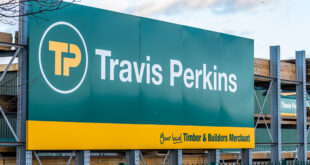Four powerful megatrends will shape how public and private spaces will be designed, built and used over the next ten years, according to a report from Marshalls, the UK’s supplier of hard landscaping materials.
The report, Future Spaces, is the result of intensive research and pulls on the expertise of leading academics, industry commentators, architects, landscape designers, material technologists, engineers and futurologists.* The four trends identified by these experts as shaping the built environment between 2016 and 2026 are:
- Sustainability: Climate change and population growth are expected to combine to make sustainability more important than ever before. Factors such as extreme weather events, air pollution and water management will force a change in relationship with natural resources.
- Shifting demographics: an ageing population, the growth of a global middle class, an increasingly financially polarised workforce and the empowerment of women are all powerful cultural shifts. These changes will have a knock on effect on the built environment, not least of which will be an increasing desire to express a sense of community and belonging.
- Accelerating urbanisation: with urban populations growing by 1.7 million globally, cities will become more densely populated, with a significant increase in demands placed on infrastructure. With space at a premium and resources stretched, the report’s contributors warn of a potential drop in the wellbeing of urban dwellers, unless urgent action is taken.
- Smart is the new green: ‘Smart’ technology and the internet of things are expected to become normalised. This will spark a drive for new technologies and materials as data is set to become the new traffic which makes cities tick.
Having pinpointed each megatrend, the report’s authors were then able to drill down further to find 12 recurrent themes which are predicted to be the ‘street level’ manifestation of these trends.
The themes identified include: more multi-use spaces and more people living in smaller spaces; an increasing demand for in-built resilience, biophilic design, urban greening and gender neutralisation; the rise the super landlords and the circular economy, a blurring of public and private spaces and the development of a new generation of concrete designed to meet the demands of the future.
Marshalls Group Marketing Director, Chris Harrop, said: “The Future Spaces report shows that, rather than a single vision for the future, the next ten years will be shaped by a complex web of interconnecting trends. As a consequence, the future for professionals working within the built environment will be filled with challenges, opportunities and no doubt a few surprises, as we seek to grapple with some of the most pressing challenges of our time.”
Further information, including details on the 12 themes identified in the report, can be found at: www.marshalls.co.uk/futurespaces.
 Builders Merchants Journal – BMJ Publishing to Builders Merchants and the UK merchanting industry for more than 95 years
Builders Merchants Journal – BMJ Publishing to Builders Merchants and the UK merchanting industry for more than 95 years



